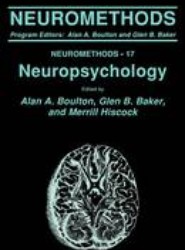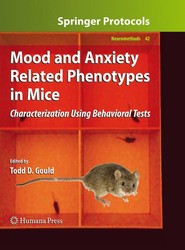(To see other currencies, click on price)
MORE ABOUT THIS BOOK
Main description:
The need to better understand the molecular, b- chemical, and cellular processes by which a developing neuronal system unfolds has led to the development of a unique set of experimental tools and organisms. Special emphasis was devoted to allowing us access, at the ear- est stages, to the genomic basis underlying the system's ultimate complexity, as exhibited once its structures are fully formed. Yet, nerve cells are anatomically, physiolo- cally, and biochemically diverse. The multitude of d- tinctly different routes for their development thus makes the developing nervous system especially intriguing for molecular neurobiologists. In particular, the demands of modern molecular neuroscience call for the establishment of efficient yet versatile systems for studying these c- plex processes. Transgenic embryos of the frog Xenopus laevis offer an excellent system for approaching neuroscientific issues. Insertion of foreign genes is performed simply, by mic- injection under binocular observation; hundreds of in vitro-fertilized embryos can be microinjected in one experiment. Embryos develop in tap water, at room t- perature, and within a few days become independent swimming tadpoles with fully functioning neuromus- lar systems. Being relatively small, these organisms are amenable to detailed analyses at the levels of mRNA, protein, and cell. Their rapid development permits the study of morphogenetic processes involved in early development, such as myogenesis and neural induction, as well as those involved in organogenesis and formation of the brain, the musculature, and the interconnections between them. Foreign DNA remains predominantly extrachromosomal.
Contents:
Chapter 1: Scientific Background. Xenopus laevis as an Experimental Model System. Xenopus Development. Prefertilization. Fertilization. Postfertilization. Cortical Rotation. Cleavage (Stages 1-8 Leading to Blastula). Gastrulation (Stages 8-13). Neurulation (Stages 12-20). Myogenesis (Stage 10+ Onwards). Somitogenesis (Stage 17 to Tadpole). Hatching (Stage 25). Neuromuscular Junction Formation in Developing Xenopus Embryos. Xenopus Oocyte Microinjection. Xenopus Embryo Microinjection. Overview. Microinjection Strategies. General Considerations. Studying Gene Regulation. Studying Gene Function by Overexpression. Induction Assays in Animal Caps. Induction Assays in Whole Embryos. Other Gene Function Assays. Studying Gene Function by Downregulation. Targeted mRNA Destruction. Injection of Antibodies. Dominant-Negative Molecules. Host Transfer. Detection Strategies. Detection of RNA. Detection of Proteins. Histology. Artifacts. The Vertebrate Neuromuscular Junction. Neuromuscular Junction Structure. Aggregation of Acetylcholine Receptor/
Acetylcholinesterase. Synapse-Specific Transcription of Synaptic Proteins. Cholinergic Signaling and Neuromuscular Pathologies. Acetylcholinesterase. Biological Roles. Neuromuscular Junction Acetylcholinesterase. Acetylcholinesterase in the Central Nervous System. Embryonic Acetylcholinesterase. Hematopoietic Acetylcholinesterase. Acetylcholinesterase Gene. Acetylcholinesterase Gene mRNAs. Acetylcholinesterase-The Enzyme. Acetylcholinesterase Molecular Polymorphism. Heterologous Expression of Acetylcholinesterase. Chapter 2: Experimental Methodologies. Reagents, Buffers, and Solutions. Microinjections. Vectors. In Vitro-Transcribed RNA. DNA Expression Plasmids-Acetylcholinesterase. DNA Expression Plasmids-Acetylcholine Receptor. Xenopus Oocyte Microinjections. Xenopus Embryo Microinjections (see Appendix V for Detailed Protocol). Biochemical Analyses. Homogenizations. Total Homogenates. Subcellular Fractionation. Acetylcholinesterase Activity Assays. Sucrose Gradient Ultracentrifugation. Enzyme Antigen Immunoassay. Polyacrylamide Gel Electrophoresis. Sodium Dodecyl Sulfate-Polyacrylamide Gel Electrophoresis/Immunoblot. Nondenaturing Gel Electrophoresis. Histochemical Analyses. Whole-Mount Cytochemical Staining. Whole-Mount Immunocytochemical Staining. Electron Microscopy. RT-PCR Procedure and Primers. Chapter 3: Experimental Applications: Human Acetylcholinesterase as a Model Nervous System Protein. Xenopus Oocyte Microinjections. Human Acetylcholinesterase Expressed in mRNA-Injected Xenopus Oocytes. Heterologous Acetylcholinesterase Is Biochemically Indistinguishable from Native Human Acetylcholinesterase. Cytomegalovirus Promoter Directs Acetylcholinesterase Expression in DNA-Injected Xenopus Oocytes. Xenopus Embryo Microinjections. Transient Expression of Human Acetylcholinesterase in Microinjected Xenopus Embryos. Apparently Normal Development of Acetylcholinesterase-Overexpressing Xenopus Embryos. Recombinant Human Acetylcholinesterase Is Immunochemically Distinct from Xenopus Acetylcholinesterase. Oligomeric Assembly of Recombinant Human Acetylcholinesterase in Xenopus Embryos. Characterization of a Human Acetylcholinesterase Gene Promoter in Xenopus Embryos. Human Acetylcholinesterase Gene Promoter Composition. Transcription from the Human Acetylcholinesterase Gene Promoter in Xenopus Detected by RT-PCR . Microinjected Embryos Utilize Correct 5' Splice Site. Unique Properties of an Alternative Acetylcholinesterase Expressed in Xenopus Embryos. A Novel AChE mRNA Species Characterized in Xenopus. Tissue-Specific Management of Human Acetylcholinesterases Derived from Alternative AChE mRNAs. Whole-Mount Cytochemical Staining Reveals Tissue-Specific Accumulations of Acetylcholinesterase. Electron Microscope Analysis Reveals Subcellular Compartmentalization of Human Acetylcholinesterase in Xenopus Muscle. Accumulation of Acetylcholinesterase in Neuromuscular Junctions of DNA-Injected Xenopus
PRODUCT DETAILS
Publisher: Springer (Humana Press Inc.)
Publication date: November, 2010
Pages: 216
Weight: 333g
Availability: Available
Subcategories: Neuroscience
From the same series
Francisco Ciruela
Alon Korngreen
Judee K. Burgoon
David Walker
Nina Karpova
Gabriela K. Popescu
Jerome Y. Yager
Heather A. Bimonte-Nelson
Tetsuichiro Saito
Adalberto Merighi
Giselbert Hauptmann
Joost Verhaagen
Pierre L. Roubertoux
Kewal K. Jain
Wolfgang Blenau
Mario Tiberi
Vangelis Sakkalis
Benjamin R. Arenkiel
Jennie B. Leach
Johannes Hirrlinger
Alvaro Pascual-Leone
Theodore H. Schwartz
Eugenio F. Fornasiero
Antoine Triller
Fritjof Helmchen
Alan A. Boulton
Alan A. Boulton
Peter Thorn
Riccardo Brambilla
Alan A. Boulton
Alan A. Boulton
Alan A. Boulton
Alan A. Boulton
Wolfgang Walz
Alan A. Boulton
Alan A. Boulton
Alan A. Boulton
Alan A. Boulton
Alan A. Boulton
Alan A. Boulton
Alan A. Boulton
Alan A. Boulton
Alan A. Boulton
Alan A. Boulton
Alan A. Boulton
Alan A. Boulton
Wolfgang Walz
Alan A. Boulton
Alan A. Boulton
Alan A. Boulton
Alan A. Boulton
Alan A. Boulton
Peter V. Nguyen
Stephane Marinesco
H. Aldskogius
Rolf Dermietzel
Paul M. Pilowsky
Giuseppe Di Giovanni
Ricardo Martinez Murillo
Nicole M. Avena
Klaus Ballanyi
Jean-Rene Martin
Bassem A. Hassan
Gerhard Grunder
Emilio Badoer
Allan V. Kalueff
Hideyuki Mukai
Todd D. Gould
Ole H. Petersen
Tommaso Fellin
Alexei Morozov
Yannis Karamanos
Alan A. Boulton
Stephen B. Dunnett
Stephen B. Dunnett
Todd D. Gould
Patricio O'Donnell
Ka Wan Li
Scott Q. Harper
Michael Aschner
James J. Chambers
Mary C. Olmstead
Illana Gozes
Peter Paul de Deyn
Robert P. Vertes
Andrea C. LeBlanc
Hugh C. Hemmings
Alan A. Boulton
Alan A. Boulton
Wolfgang Walz
Alan A. Boulton
Allan V. Kalueff
Allan V. Kalueff
Chao Ma
Jacob Raber
Ulrich Dirnagl
Iok-Hou Pang
Allan V. Kalueff
Kewal K. Jain
Prof. Alexei Verkhratsky
Todd D. Gould
Massimo Filippi
Scott C. Baraban
Illana Gozes
Wolfgang Walz

















































































































